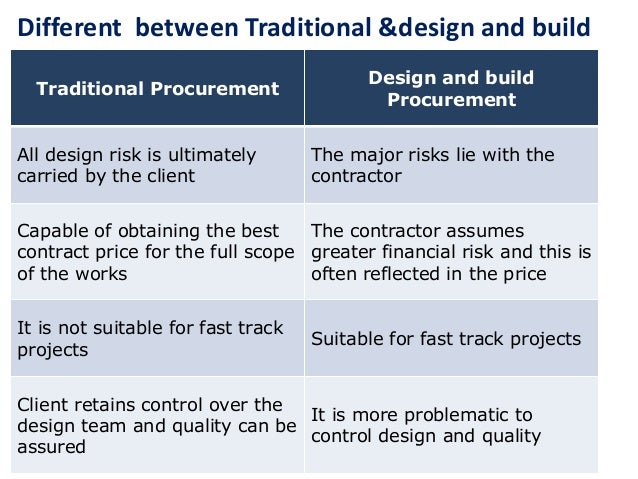
Whilst two stage tendering is not uncommon in the industry for larger, higher value, projects, it will be interesting to see if the advocating of this procurement method, along with the desire in the sector to mitigate the risks of further contractor insolvency, results in an increase in its adoption across projects of varying scale, complexity and value. Negotiations may become more protracted during the second stage. The preferred contractor may not price as competitively as it would have if there was a single stage tender process _ this may lead to a sharp escalation in pricing. There are a number of procedures that can be adopted to select and appoint suppliers. In order to procure a building, a client will normally have to appoint a number of suppliers. The two stage tendering process may be more time consuming and this may not be appealing to employers with a tight development programme. Negotiated contract - Designing Buildings - Share your construction industry knowledge. What are the negatives of two stage tendering? Increased contractor involvement in design, which can potentially lead to innovative design developments and reduce construction risks.īetter integration between the contractor and the design team through early involvement.

Reduced risk of delay, as the contractor is given greater opportunity to feed into the programme. This can also potentially lead to cost savings for the employer.

Greater cost certainty, as contractors are able to price a project with an informed understanding of it. What are the benefits of two stage tendering? The second stage usually ends with the contractor being engaged under a build contract. Stage 2: the relationship between the employer and the contractor is governed by the PCSA, under which the contractor will usually assist in the design process and advise on a wide range of matters including, for example buildability, programming, construction risk, works packages, interface issues and the use of specialist contractors. The successful contractor is then often engaged under a pre-construction services agreement (PCSA).
#NEGOTIATED TENDERING ADVANTAGES AND DISADVANTAGES PROFESSIONAL#
Stage 1: the employer tenders the project on the basis of an incomplete design, price and programme prepared by the employer's professional team.

Two stage tendering is typically used for design and build projects and involves engaging a contractor at a much earlier stage of a project. The report recommends that the use of single stage procurement should be discouraged in projects valued at £10m and more. A recent report issued by The Confederation of British Industrylooks at the reasons why the average margins of the largest construction firms are 'in the red' and why construction is one of the hardest hit sectors when it comes to insolvency.ĬBI suggests "intelligent procurement" is imperative, with multiple stage procurement routes, such as two stage tendering, being advocated as a means of managing cost risks in construction projects and putting contractors back on a stable footing.


 0 kommentar(er)
0 kommentar(er)
